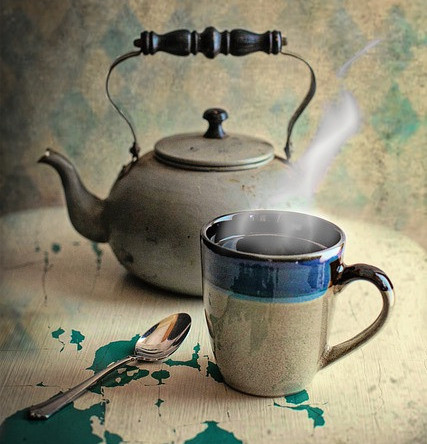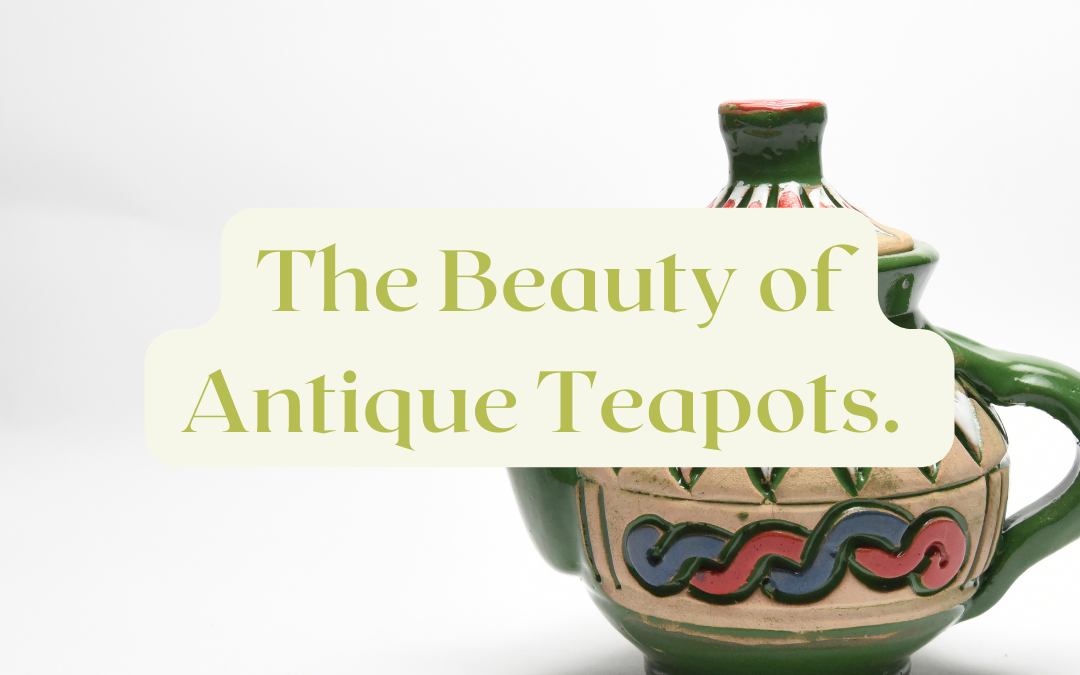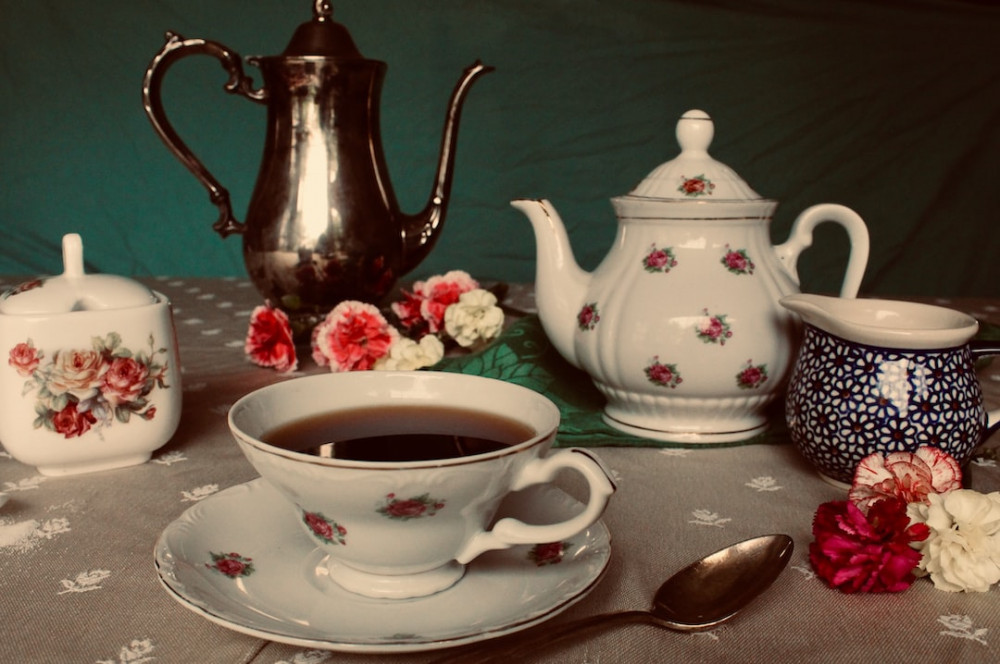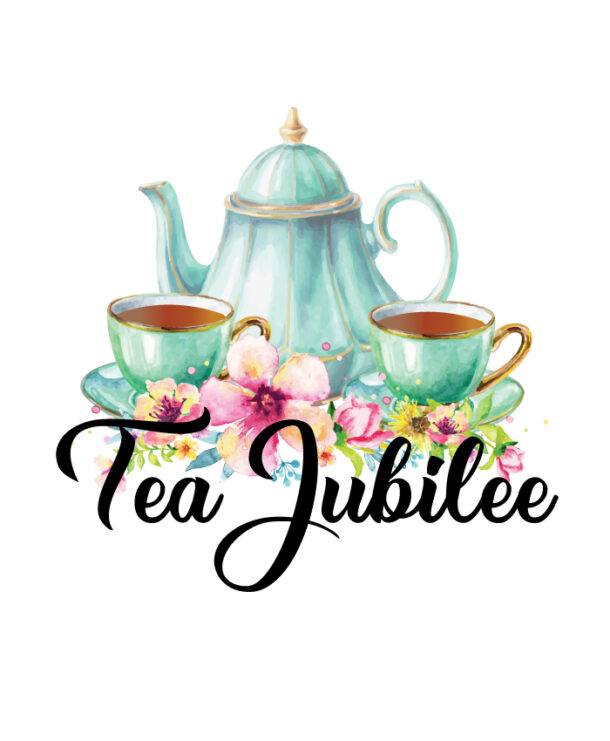==================
A Caveat and Affiliates
First off, a little caveat: within my articles you will find affiliate links, meaning if you buy them, I get a small commission. Your cost is not affected. In addition, I am an Amazon Associate and I earn from qualifying purchases on Amazon.
And yes, if I say that I recommend a product here, it means I truly believe it is a good product. I refuse to recommend any product that I have not researched and believe to be a good value.
Even better, I provide you with a very clear picture of the product, it’s use, and the probable value.
Earning your trust is important to me. I run this website myself and the commissions and donations help support the site.
Sound reasonable and fair enough? Let’s continue to the article.
==================
Contents
The Beauty of Antique Teapots.
Hello, tea lover. I hope you’re having a great day. Do you love antique Teapots? Yes?! Then you’ll love this article!
In this article, we will delve into the rich history of The Beauty of Antique Teapots. Explore their beauty and artistry, learn how to choose the perfect teapot for your collection, master the art of tea brewing, and discover the joy of tea ceremonies. So, pour yourself a cup of tea, sit back, and embark on a journey into the enchanting world of old-fashioned teapots.
Tea has long been a cherished beverage enjoyed by countless people worldwide. The variety and depth of flavors are endless, from delicate white to robust black teas.
But there is more to the art of tea brewing than just the leaves themselves. Enter the world of old-fashioned teapots – vessels that brew the perfect cup of tea and serve as beautiful examples of artistry and craftsmanship.
The History and Beauty of Antique Teapots.
To truly appreciate the beauty and artistry of Antique Teapots. It is important to understand their history. Teapots originated in China during the Yuan Dynasty (1271-1368) and were initially made from porcelain.
These early teapots were small and had a simple design, reflecting the refined elegance of Chinese tea culture. As tea spread to other parts of the world, teapot designs evolved, incorporating influences from different cultures and artistic styles.
During the 18th and 19th centuries, the British became enamored with tea and developed their unique style of teapots. These teapots were often made from silver or ceramic and featured intricate patterns and ornate handles.
The Victorian era saw the rise of elaborate teapot designs, with motifs ranging from flowers to mythical creatures. Today, collectors and tea enthusiasts appreciate these old-fashioned teapots’ historical significance and craftsmanship.
The Beauty and Artistry of Antique Teapots.
Antique teapots are more than just functional vessels; they are works of art in their own right. From the delicate curves of the handle to the intricate details of the spout, each teapot is a testament to the skill and creativity of its maker. The materials used to create these teapots vary widely, from fine porcelain to vibrant ceramics and even precious metals like silver and gold.
One of the most fascinating aspects of antique teapots is the wide range of styles and designs available. Whether you prefer the simplicity of a classic Chinese teapot or the luxury of a Victorian-era piece, there is a teapot to suit every taste. Some teapots feature hand-painted scenes, depicting everything from serene landscapes to bustling cityscapes. Others are adorned with intricate patterns or embossed with decorative motifs.
Whatever your preference, owning an antique teapot allows you to appreciate the beauty and artistry of tea brewing on a whole new level.
Different Types of Antique Teapots.
Antique teapots come in various shapes and sizes, each with unique characteristics. Let’s explore some of the most popular types of old fashion teapots:
- Chinese Yixing Teapots: These teapots are made from a particular type of clay known as Yixing clay, which is revered for its ability to enhance the flavor of tea. Yixing teapots are typically unglazed and come in various shapes, such as round, square, or gourd-shaped.
- Japanese Cast Iron Teapots: Known as Tetsubin, these teapots are made from iron and are known for their durability and heat retention. They often feature intricate designs and are a popular choice for tea ceremonies.
- English Bone China Teapots: These are made from fine bone china, a type of porcelain prized for its translucency and delicate appearance. English bone china teapots are known for their elegant designs and are often adorned with floral motifs.
- Silver Teapots: Silver teapots are a symbol of luxury and sophistication. They are often crafted with intricate engravings and can be passed down as heirlooms from generation to generation.
Choosing the perfect antique teapot for your collection depends on your taste, the type of tea you prefer, and the overall aesthetic you want to achieve. Consider the teapot’s materials, designs, and functionality to ensure it aligns with your preferences.
How to Choose the Perfect Antique Teapot for Your Collection.
Several factors must be considered when choosing an antique teapot for your collection. Here are some tips to help you make the right choice:

- Consider the material: Decide whether you prefer a teapot made from porcelain, ceramic, cast iron, or silver. Each material has its own unique characteristics and aesthetic appeal.
- Evaluate the design: Look for a teapot that resonates with your style and complements your existing tea set or home decor. Consider the shape, color, and decorative elements incorporated into the design.
- Assess the functionality: Consider how the teapot performs regarding heat retention, pouring ability, and ease of cleaning. A well-designed teapot should not only be visually appealing but also practical to use.
- Research the maker: If you are interested in collecting teapots as a hobby, research the history and reputation of the teapot maker. This will add value to your collection and deepen your appreciation for the craftsmanship involved.
Considering these factors, you can ensure that the antique teapot you choose enhances your tea brewing experience and becomes a cherished piece in your collection.
The Art of Tea Brewing with Antique Teapots

Brewing tea with an antique teapot is a time-honored tradition that requires a delicate touch and a keen understanding of the brewing process. Here are some steps to help you master the art of tea brewing:
- Preheat the teapot: Warm the teapot by rinsing it with hot water. This will help maintain the temperature of the tea as it brews.
- Measure the tea: Use a tea scoop or tablespoon to measure the desired tea leaves. The amount may vary depending on the type of tea and personal preference.
- Boil the water: Bring fresh, filtered water to the appropriate temperature for the type of tea you are brewing. Different teas require different water temperatures to extract their optimal flavors.
- Add the tea leaves: Place the measured tea leaves into the teapot. Increase the tea leaves for a more potent brew, but be mindful not to overcrowd the teapot.
- Pour the water: Slowly pour the hot water over the tea leaves, ensuring that they are fully submerged. Allow the tea to steep for the recommended time, typically 2-5 minutes, depending on the type of tea.
- Pour and enjoy: Once the tea has steeped, pour it into cups or a tea bowl, using a filter if necessary to catch any loose tea leaves. Sit back, savor the aroma, and enjoy the artistry of tea brewing with your old-fashioned teapot.
Mastering the art of tea brewing takes practice and experimentation. As you become more familiar with your antique teapot and the different types of tea, you will develop a deeper appreciation for the nuances of flavor and the beauty of the brewing process.
Tips for Cleaning and Maintaining Antique Teapots.
Proper cleaning and maintenance are essential to ensure the longevity and beauty of your antique teapots. Here are some tips to help you care for your teapots:
- Hand wash only: Most old-fashioned teapots are not dishwasher safe and should be washed by hand. Use warm water and mild dish soap to clean the teapot, removing any stains or residue gently.
- Avoid harsh chemicals: Do not use abrasive cleaners or harsh chemicals on your teapots, as they can damage the finish or remove any decorative elements. Stick to gentle cleaning methods to preserve their beauty.
- Dry thoroughly: After washing, dry the teapot thoroughly with a soft cloth to prevent water spots or mold from forming. Ensure that no water remains trapped inside the teapot, which can lead to cracking or other damage.
- Store with care: When not in use, store your teapots in a cool and dry place, away from direct sunlight. Protect them from potential damage by wrapping them in soft cloth or tissue paper.
Following these cleaning and maintenance tips ensures that your antique teapots remain pristine for years, allowing you to continue enjoying their beauty and functionality.
Collecting Old Fashion Teapots: Where to Find and How to Value Them.
Collecting these unique pieces can be a rewarding hobby for those passionate about old-fashioned teapots. Here are some tips on where to find old fashion teapots and how to value them:
- Antique and flea markets: Visit local antique stores and flea markets to find a wide selection of old-fashioned teapots. These places often have a variety of styles and designs to choose from, allowing you to find a teapot that suits your taste.
- Online marketplaces: Explore online marketplaces like eBay, Etsy, or specialized teapot collector websites. These platforms offer a vast selection of old-fashioned teapots worldwide, making finding rare or unique pieces easier.
- Auctions and estate sales: Attend auctions or estate sales that feature antiques. These events can be a treasure trove for teapot collectors, offering the opportunity to find valuable and rare teapots.
When it comes to valuing old fashion teapots, several factors come into play. These include the age, condition, rarity, and historical significance of the teapot, as well as the maker’s reputation. Consulting with experts or appraisers can help you determine the value of your teapots or assist you in making informed purchasing decisions.
Showcasing the Beauty of Old Fashion Teapots in Your Home.
Old-fashioned teapots enhance the tea brewing experience and add a touch of elegance and charm to your home. Here are some ideas for showcasing the beauty of your teapots:
- Create a dedicated display: Arrange your teapots on a shelf or in a glass cabinet, allowing their beauty to be admired by all who enter your home. Consider grouping them by style, color, or size for a visually appealing display.
- Use them as centerpieces: Place a teapot filled with fresh flowers as a centerpiece on your dining table or coffee table. This adds a pop of color and highlights the teapot as a decorative element.
- Incorporate them into your tea station: If you have a designated tea brewing area, display your teapots alongside your tea cups, tea leaves, and other accessories. This creates a cohesive and visually pleasing tea station.
- Host a tea party: Invite friends and family over for a tea party, using your old-fashioned teapots as the centerpiece. This allows you to share the beauty and artistry of tea brewing with others while creating lasting memories.
By incorporating your old-fashioned teapots into your home decor, you can showcase their beauty and create a visually stunning space that reflects your love for tea and appreciation of artistry.
The Joy of Tea Ceremonies with Old Fashion Teapots.
Tea ceremonies have a long history and are deeply rooted in various cultures worldwide. They allow them to slow down, savor tea flavors, and connect with others. Using old-fashioned teapots in tea ceremonies adds an extra layer of authenticity and tradition. Here are some critical elements of a tea ceremony:
- Setting the stage: Create a serene and peaceful environment for the tea ceremony. This could be a dedicated tea room or a quiet corner of your home adorned with soft lighting, comfortable seating, and calming elements such as incense or candles.
- Preparing the tea: Follow the traditional steps of tea brewing using your old-fashioned teapot. Pay attention to the temperature of the water, the steeping time, and the pouring technique. Let the tea steep and infuse, releasing its aroma and flavors.
- Serving the tea: Use a tea tray or tea table to serve the tea to your guests. Pour the tea into small cups or bowls gracefully and precisely. Offer the tea to each guest, allowing them to appreciate its aroma before taking a sip.
- Enjoying the tea: Encourage your guests to savor the flavors of the tea, discussing its aroma, taste, and mouthfeel. Engage in meaningful conversations and cultivate a sense of mindfulness and presence.
Tea ceremonies with old-fashioned teapots are a beautiful way to celebrate the artistry and tradition of tea brewing. They foster a sense of connection and appreciation for the tea, the teapot, and the company of others.
Conclusion: Embracing the Artistry and Tradition of Antique Teapots.
As we journeyed through the history, beauty, and artistry of old-fashioned teapots, it becomes clear that these vessels are more than just tools for brewing tea. They are gateways to a world of tradition, craftsmanship, and beauty. Whether you are a collector, a tea enthusiast, or simply someone who appreciates the finer things in life, owning an old-fashioned teapot allows you to experience the art of tea brewing on a whole new level.
So next time you indulge in a cup of tea, take a moment to appreciate the teapot that brought it to life and let the artistry and tradition of old-fashioned teapots enrich your tea-drinking experience.
Uncover the beauty and artistry of old fashion teapots. Start your collection and embark on a journey of tea brewing excellence. Explore our exquisite teapots and accessories.
Here are teapots I would love to try out.
RekRang Longevity Crane Cast Iron Teapot Set..
BTaT- Porcelain Tea Pot with Stainless Steel Infuser.
More From Tea Jubilee.
The Elegance of Glass Teapots.
Looking for something to snack on with your cup of tea? Try out this Cranberry-Orange Pound Cake recipe.
I hope you enjoyed reading about The Beauty of Antique Teapots; share this with someone you know would love to read this and learn about The Beauty of Antique Teapots just like you did.
Have a blissful day!





